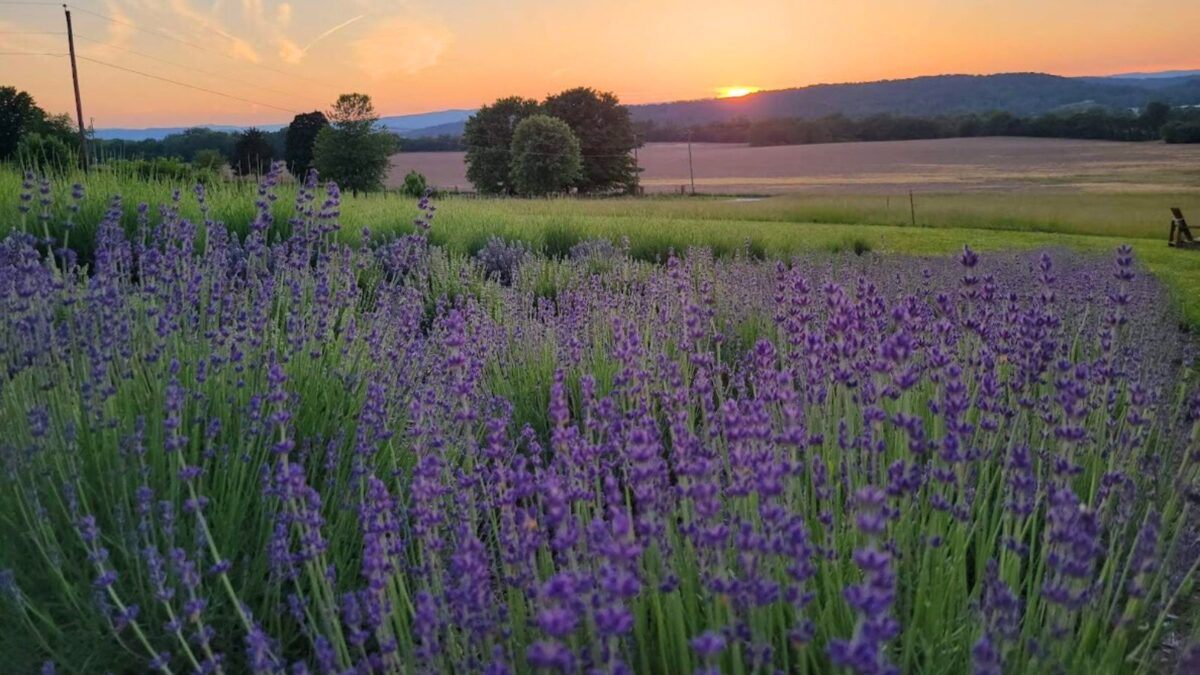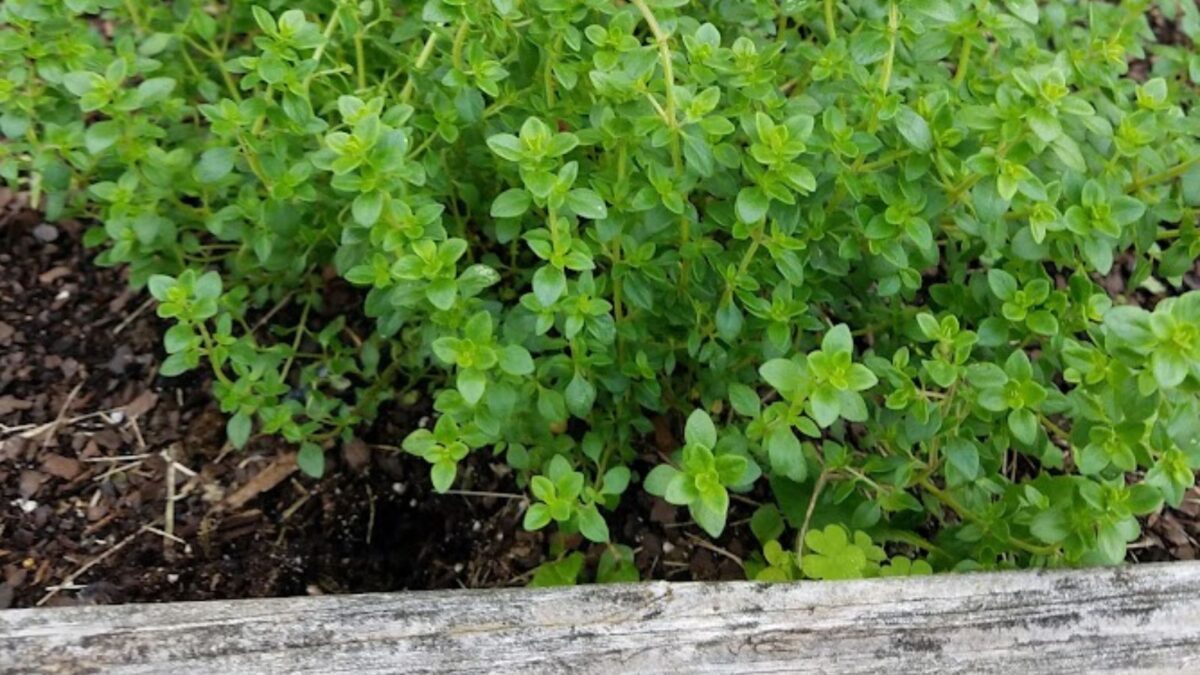Whether you want to create a fruit tree guild or simply add a ground cover around your fruit trees, knowing some of the best companion plants for fruit trees will help you immensely. These companions offer a host of benefits, and ideally, a fruit tree will be underplanted with several plants filling various roles. This is called a fruit tree guild. The companion plants attract pollinators, deter pests, and improve the soil by fixing nitrogen, providing mulch, suppressing weeds, and accumulating nutrients. Many plants serve multiple roles!

Companion Plants for Fruit Trees
1. Borage

Borage is perhaps a lesser-known herb that deserves more attention as a companion plant. This European herb has stunning blue star-shaped flowers that attract pollinators and other beneficial insects. Its dense, prickly leaves both shade the soil and deter grazing mammals. And once it has finished flowering, it can be “chopped and dropped” in place to serve as mulch and return nutrients back into the soil. Though an annual, borage also happily self-sows, so its beauty and other benefits can be enjoyed year after year.
Learn more about growing borage.
2. Chives

With their narrow, grass-like leaves and vertical growth, chives are great to tuck in around other plants, though they can also be massed to prevent weed growth. Their pink pompom flowers attract bees and other pollinators and add a whimsical touch to the garden. Their pungent aroma also confuses or deters many pests. Finally, chives have antifungal properties, making them an excellent addition around apple trees to help prevent apple scab.
Learn more about growing chives.
3. White clover

A hardy, low-growing perennial ground cover, white clover (Trifolium repens) can be grown right up to the trunk of the tree, replacing mulch but never needing to be mowed. It can be walked on to access the tree for pruning or harvesting, and its dense, spreading nature prevents weed growth. As a legume, white clover fixes nitrogen in the soil to make it more readily available for the fruit tree (and other companion plants!). And if all that’s not enough, its little white flowers draw in pollinators too.
4. Comfrey

Comfrey is a popular permaculture plant best known for its significant biomass production. It has large, nutrient-dense leaves and can be chopped back as many as three or four times in a single season to use as a fertilizing mulch. When allowed to bloom, its tubular flowers attract pollinators, and its foliage provides habitat for beneficial insects.
5. Daffodils

Both purposeful and beautiful, daffodils herald spring with their cheery yellow flowers early in the season. When planted around fruit trees, they help deter grazing wildlife like deer, and they can also repel fruit tree borers. Choose daffodils, chives, or garlic to fill this pest-deterring role, or interplant them for an extended bloom time (daffodils and chives) and mixed uses (cut flowers, herbs, and garlic bulbs).
6. Garlic

Like chives, garlic has a strong scent that deters a range of pests, from fruit tree borers to deer. This fall-planted bulb sprouts in the winter and grows until the harvesting stage in midsummer, showing some green growth when most other plants are fully dormant. Plus, garlic is a common ingredient in recipes, making it useful in the kitchen as well as around fruit trees in the garden.
7. Lavender

While many people find the scent of lavender pleasant and calming, many pests avoid the strong fragrance and thus also stay away from any nearby plants that it might mask. The soft gray-green foliage and spikes of white to deep purple flowers add beauty to any space, and the blooms attract beneficial insects as well. Lavender also has many uses outside the garden, from cooking to crafting, so make sure to choose an appropriate variety if you would like to harvest it for a specific purpose. Otherwise, any variety will provide benefits to fruit trees.
Learn how to grow lavender for fun and profit.
8. Lentils

Lentils may not be among the first plants you consider to grow around fruit trees, or in any part of your garden. But these legumes are an easy annual ground cover to grow around the base of fruit trees. Not only do they serve as a living mulch, but they fix nitrogen and then return nutrients to the soil when they die back or are cut, serving as a nutrient-dense mulch even after their life cycle is complete. You can, of course, choose to harvest your lentils, but they may be best used as simply a nitrogen-fixing ground cover in this instance.
9. Oregano

Oregano is another helpful perennial herb to grow around the base of fruit trees. Its scent helps repel pests, and its sprawling nature makes it a good ground cover as well. Oregano doesn’t mind a bit of foot traffic, and its tiny pale flowers draw in a surprising number of beneficial insects, including pollinators like bumblebees and predatory insects like lacewings. Plus, like many of the plants on this list, it’s edible!
10. Rhubarb

Rhubarb is a popular perennial vegetable for a reason—several, in fact. Perhaps most obvious is the delicious, tart flavor its stems impart to sweet springtime treats like strawberry rhubarb pie or jam. But its toxic leaves also serve an important role in the garden. When you harvest the stalks, cut the leaves and lay them around the base of the plants to suppress weeds and give nutrients back to the soil as they break down. The broad leaves help shade the soil when still attached to the plant, too, making rhubarb a good ground cover under fruit trees.
11. Yarrow

Yarrow (Achillea spp.) has lovely soft, ferny foliage and flat-topped clusters of tiny flowers that make it an attractive addition to flower beds, pollinator gardens, and naturalized areas. But it also deserves a space near fruit trees, as those pretty flowers attract pollinators that benefit the trees. It is also consider a dynamic accumulator, meaning that, like comfrey, it draws up significant amounts of nutrients and can be “chopped and dropped” to release those nutrients back into the soil to be used by the fruit trees.
There are so many plant combinations that will not only benefit your fruit trees but also look beautiful in the garden! So as you consider which companions to plant with your fruit trees, have fun mixing and matching different flower colors and foliage textures as well as benefits like attracting beneficial insects, repelling pests, and providing mulch and nutrients.



